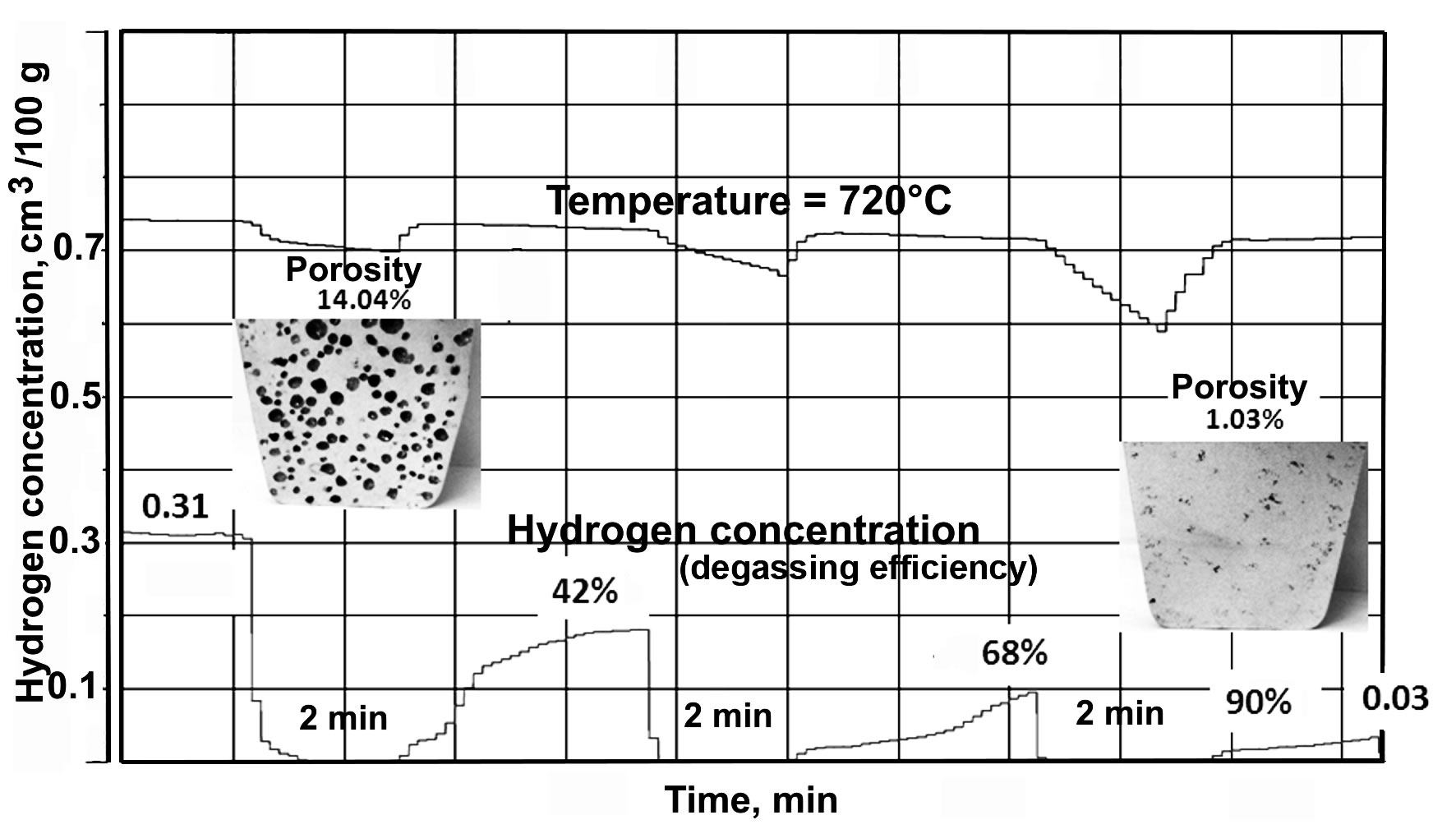Ultrasound provides cleaner, more efficient degassing
Scientists at Brunel University have confirmed that treating molten metal with ultrasound is a cleaner, greener, more efficient route to producing high quality castings. At 700°C, molten aluminium alloys naturally contain a high percentage of dissolved hydrogen, leaving a highly porous result if unaddressed. The most widely-used method of hydrogen removal, argon rotary degassing, is energy intensive and requires costly components.
In pilot scale trials funded by EU Framework Seven Programme, the team, led by Professor Dmitry Eskin of the Brunel Centre for Advanced Solidification Technology, found that ultrasound was just as efficient as the standard method but produced far less waste material (dross) and was much greener.

Professor Eskin stated: “We know from industry that the price of argon gas continues to rise because making it requires producers to liquefy air which takes a lot of energy. If the graphite impellers used by the process break whilst in use, the entire batch of alloy is contaminated and useless. Our pilot scale research with quantities of up to 150kg confirmed earlier laboratory tests that a moving ultrasound probe could achieve the similar end results in terms of the resulting casting quality to using argon but with the advantages of not relying on expensive and fragile graphite rods and expensive gas which cannot be captured and recycled.”
“The five-fold reduction of the amount of dross created is another benefit. Recovering useable metal from dross is also an expensive and energy intensive process that involves electrolysis.”
While the next aim of Prof Eskin’s team is to scale up the trials to the half-tonne level the eventual aim is to introduce cost-effective ultrasound de-gassing earlier in the production cycle.
He added: “Economic drivers like producing lighter engines and lighter car bodies are pushing process improvements in producing higher quality alloys much further back in the production cycle to where alloys are first smelted. “Ultrasound treatment holds out the promise of being able to de-gas effectively and continuously and we have already made some steps towards achieving this on the pilot level.”





